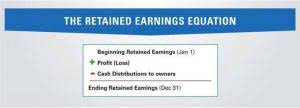
The goods you can include in this category are usually useful assets that help your business well. Generally, plant assets are among the most valuable company assets and tend to be relied on greatly over the long term. As such, these assets provide an economic benefit for a significant period of time. Effective acquisition of plant assets requires careful planning, thorough research, and attention to detail.

AccountingTools
Revaluations every three to five years are permissible in most other circumstances, according to IFRS. Each of these types is classified as a depreciable asset since its value to the company and capacity to generate income diminishes during the asset’s useful life. Making continual improvements and continuously reviewing the quality of assets is an important part of keeping a company healthy. Improvements should be done on a regular basis or when a scenario necessitates intervention to extend the life of assets and avoid future issues with their capacity to serve a business. Improvement for one company will very certainly differ dramatically from that of another.
Common questions

It’s determined by multiplying the difference between an asset’s purchase price and its projected salvage value by the number of years it’ll be in use. In any case, owing to price and duration, property held by a company is generally the most valuable asset. The land is also an asset that is unlikely to deteriorate in value over time. Buildings that can be used plant assets are defined as as a plant asset aren’t limited to offices. Buildings can also contain equipment storage, warehouses for merchandising and sales, or on-site centers that assist employees and staff, especially for bigger companies. Buildings are assets that often retain higher quantities of value, such as office space or a physical location where consumers can do business.

Navigating Crypto Frontiers: Understanding Market Capitalization as the North Star

Proper recording and classification of plant assets in accounting documents their cost, useful life, and depreciation, showcasing their value in the financial statements. Depreciation captures the gradual loss of value and wear and tear of plant assets, allowing for accurate financial reporting and asset management. Plant assets are vital components of a company’s long-term operations, representing tangible assets used in the production process or revenue generation. Understanding the management and accounting of these assets is essential for maintaining financial stability, evaluating investments, and making informed decisions. By effectively acquiring, recording, depreciating, and disposing of plant assets, businesses can maximize their operational efficiency, profitability, and competitive advantage.
- Keeping detailed records is key for staying on track with financial rules and knowing how much your buildings are worth.
- This category includes physical items like land, machinery, buildings, vehicles, and equipment.
- Plant assets (other than land) are depreciated over their useful lives and each year’s depreciation is credited to a contra asset account Accumulated Depreciation.
- This can help provide accurate financial information if the market for plant assets is unusually volatile.
- Depreciation and amortization, or the process of expensing an item over a longer period of time than when it was acquired, are calculated on a straight-line basis.
- Moveable equipment differs because it can travel from place to place.
Moveable equipment differs because it can travel from place to place. Items such as laptops, tools, or machinery fall under this category. Keeping track of these assets helps businesses run smoothly and prevents loss or theft. Plant assets are a part of non-current assets and are usually the largest group of assets one can find in the financial statements. They normally show up as the first line item under non-current assets. As we continue to walk our way down the balance sheet, we come to noncurrent assets, the first and most significant of which is PP&E.
What these assets all have in common, that also differentiates them from current assets, is that they are not going to turn into cash any time soon and their connection to revenue is indirect. With inventory, we saw a direct match between the cost of the product and the sales revenue. Rent, insurance, and wages are examples of period costs that we match to revenues by posting them to the income statement accounts in the same period as the revenue, using time as our method of matching.
- Plant assets are goods that are considered long-term assets because of their high price or worth, even if the assets depreciate.
- With inventory, we saw a direct match between the cost of the product and the sales revenue.
- They stand alongside land, buildings, and machinery as key plant assets.
- These assets are classified as fixed assets if their cost exceeds the capitalization threshold of a business, and they are expected to be used for more than one reporting period.
- The basic principle working behind the depreciation of assets is the matching principle.
- Now let’s consider how asset lifespan and revenue potential play into managing plant resources effectively..
- In business, assets can take several forms — equipment, patents, investments, and even cash itself.
- Machinery needs regular maintenance; software requires updates to stay useful and secure.
- Fixed equipment is part of the physical structure, like heating systems or fire sprinklers.
- Improvements should be done on a regular basis or when a scenario necessitates intervention to extend the life of assets and avoid future issues with their capacity to serve a business.
- These assets are essential for a company’s day-to-day operations and contribute to its overall productivity and profitability.
- Anything that can be used productively to general sales for the company can fall into this category.
- Plant assets should be depreciated over their useful life, and reflected as an expense on the income statement.
- If debt has been used to purchase the plant asset, then the cash flow statement would also show the regular payments towards that debt too.
As they will be used for more than one accounting period, they are subject to depreciation. The purpose of depreciation is to “charge out” a portion of the plant assets which have been used during the accounting period to generate business revenue. Though plant assets are sometimes seen as expensive, not all have the same value or are prioritized by a company. A plant asset is any asset that can be utilized to produce revenue for your company. Plant assets are goods that are considered long-term assets because of their high price or worth, even if the assets depreciate. It’s crucial to recognize which of your assets are plant assets, regardless of their worth.
Over time, plant asset values are also reduced by depreciation on the balance sheet. Depreciation allocates the cost of a tangible asset over its useful life and accounts for declines in value. The total amount allocated to depreciation expense over time is called accumulated depreciation. Land assets are not depreciated because of their potential to appreciate and are always represented at their current market value. These assets are significant for any business entity because they’re necessary for running operations.
It is also called a fixed-installment method, as equal amounts of depreciation are charged every year over the useful life of an asset. A construction company might use units of production for heavy machinery wear and tear, while an office may apply straight-line for desk computers. Proper asset management ensures that moveable equipment is used efficiently and maintained well over time.